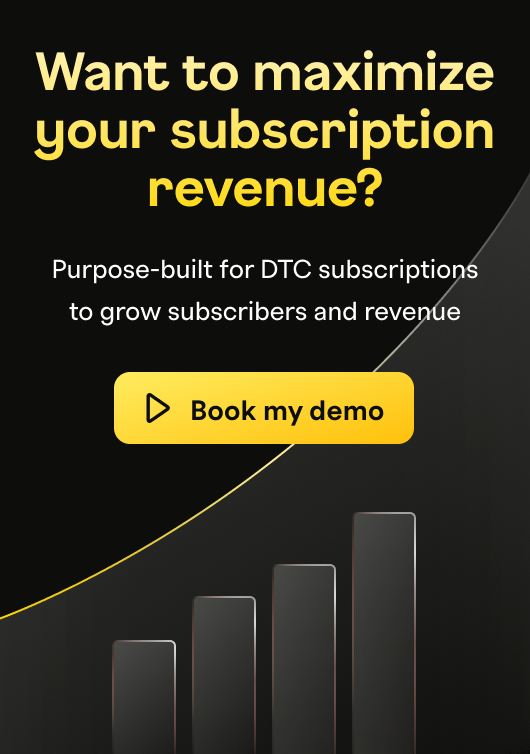How to optimize your subscription pricing strategy with engagement and cohorts

In subscriptions, one size does not fit all. Understanding the intricacies of your customer base is pivotal when it comes to pricing and packaging. A generic pricing model often misses the mark in considering the diverse needs and preferences of unique subscribers.
Personalized pricing and packaging strategies have surged to the forefront, not only as a competitive differentiator but also as a way to cultivate customer loyalty and increase user retention.
For subscription businesses, optimizing pricing is a multifaceted challenge that can dramatically impact the bottom line. During Subscription pricing & packaging: How to optimize and implement, Matt Lindsay, Mather Economics CEO, provided crucial insights on how to use customer engagement and cohorts to determine the optimal price for your subscription service.
1. Understanding customer lifecycles and subscription-based pricing
Understanding the customer lifecycle in relation to subscription pricing strategies is the first step to optimizing your prices. The cyclical phases of acquiring customers, moving them from promotional offers to regular rates, and managing ongoing pricing are critical to maximizing subscription revenue.

Successfully navigating through these stages requires gathering and analyzing different types of data at each point, such as customer information and price elasticity.
Facilitating a balance between the quantity and quality of customers is a common challenge when trying to decrease prices to increase new customer acquisition, while simultaneously trying to reduce churn rates. This is where customer segmentation comes into play.
2. Identifying subscriber cohorts by price sensitivity
Cohorts are groups of customers with similar characteristics. Analyzing these segments can help in understanding the respective engagement and value perceptions. This time, we’ll focus our segmentation based on price elasticity–the effect a price change has on sales volume.
According to Lindsay, highly elastic customers–those more sensitive to price changes–tend to churn more when moving from promotional offers to regular rates. This group is most likely to respond positively to a reduced subscription pricing model, leading to a higher probability of securing their loyalty.
Interestingly, 80% of pricing-related churn comes from 20% of your subscribers. This calls out the necessity of targeted pricing strategies to mitigate higher churn risks among this segment of your customer base.
Here’s an example of a 10% price increase across the board vs. a 5%, 10%, and 15% targeted price increase to 100,000 subscribers paying $50 monthly.

When across-the-board price changes with a 10% price increase with average price elasticity, you would expect to have 4,000 cancels due to price. Those 4000 lost subscribers would represent $200,000 a month in lost revenue and about $2,400,000 in annual loss revenue from that pricing-related churn.

Under a targeted pricing model, you would be able to reduce the pricing-related stops by almost half. For this example, let's say it went from 4,000 to 2,000 stops, which reduces the lost monthly revenue to $100,000 and the annual loss to $1,200,000.
Want to learn more? Check out Lindsay’s session from Subscription pricing & packaging: How to optimize and implement.
3. Navigating pricing and engagement with the right tools
Several variables are at play when determining price elasticity, such as customer tenure, demographics, digital engagement, and acquisition channels. To accurately measure elasticity, tools like econometric modeling, machine learning, and A/B testing strategies become incredibly useful in the process.
To help his clients, Lindsay advises them through a company’s state assessment, gathering data on pricing, customers, and technology. Then, he measures price elasticity, which informs the creation of a demand curve for the products. Such insights help form recommendations for immediate revenue generation and long-term pricing strategies.
Additionally, subscription management and recurring billing platforms like Recurly, help you launch, test, and iterate flexible pricing models to fit every product–from simple fixed-priced plans to more complex quantity- and usage-based offerings.
Get more insights to optimize your subscription pricing strategy
The subscription economy demands a new approach to pricing that is as fluid and personalized as the customer experience it seeks to create. By optimizing pricing with engagement and cohorts at the forefront, businesses can unearth new growth opportunities and fortify their market position.
It's no longer about what the market dictates but what your customers tell you they want and value. A successful subscription business model resides in more than just setting the price but in carefully considering different factors at various stages, understanding your customer base's behavior, and implementing data-informed decisions.
Use the power of data and insights to ensure your subscription pricing strategy stands out and delivers success in the long run. Lindsay's presentation shares proven tips and success stories for pricing optimization. Watch it on-demand now.


